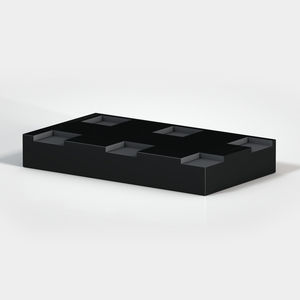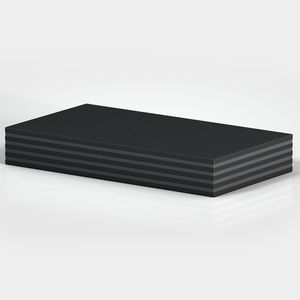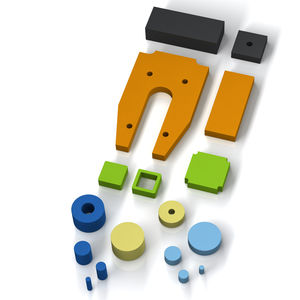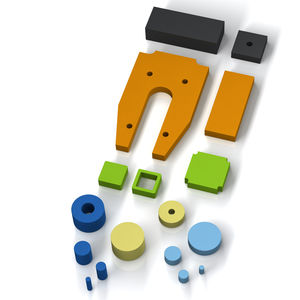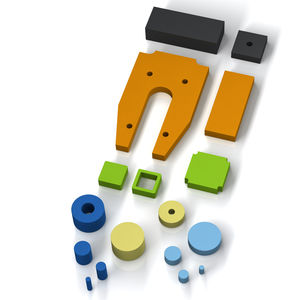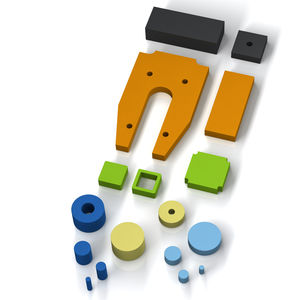
- Company
- Products
- Catalogs
- News & Trends
- Exhibitions
Polyurethane vibration damping plate SL-275-12

Add to favorites
Compare this product
Characteristics
- Other characteristic
- polyurethane
Description
Vibration-Isolating Pads
SL-275-12
Customisable in many forms
Universal Damping Plates
Natural frequency 12 Hz to 50 Hz
Load range 0.002 N/mm2 to 0.5 N/mm2
Universally applicable and custom manufactured: ACE supplies cushioning pads in the SL-170 to SL-720 range under its brand name SLAB. These universally applicable absorbers are made from highly cushionable elastic PUR materials. The 12.5 mm or 25 mm thick plates can be supplied with a density of 170 kg/m3 to 720 kg/m3 provide made-to-measure vibration isolation. They can be combined as isolation packages and custom-made to suit requirements, using water-jet cutting. Other made-to-measure options from ACE include on-site vibration measurement and product selection, a special sizing software package, and cost-neutral design.
SLAB plates can be used in many applications, such as foundations for plants and machines, compressors, pumping stations and generators.
Natural frequency 12 Hz to 50 Hz
Standard colour green
Standard density 275 kg/m3
Dimensions Widths: up to 1.500 mm
Lengths: up to 5.000 mm
Thickness: 12.5 mm
Operating temperature range -30 °C to +70 °C
Environment Resistant against ozone and UV radiation. Chemical resistancy on request.
Stroke 6.5 mm
Material Profile body: mixed cellular PUR-Elastomer (polyurethane)
Vibration-Isolating Pads - SLAB 170 to SLAB 720
Decoupling of transformers
Interference frequencies in a switch cabinet caused two parallel-connected transformers to vibrate so much that working quietly in adjacent rooms was all but impossible. Because they stood on the ground, it was their weight that caused office...
Catalogs
Main Catalog 2018
294 Pages
Related Searches
- ACE anti-vibration mount
- Machine foot
- ACE shock damper
- ACE hydraulic damper
- ACE metal anti-vibration mount
- Metal foot
- Leveling foot
- ACE mechanical damper
- ACE metal damper
- ACE industrial damper
- ACE rubber anti-vibration mount
- Elastomer foot
- ACE machine damper
- ACE plastic damper
- ACE cylindrical anti-vibration mount
- ACE vibration damper
- ACE adjustable damper
- ACE gas spring
- Rubber anti-vibration mount
- ACE steel damper
*Prices are pre-tax. They exclude delivery charges and customs duties and do not include additional charges for installation or activation options. Prices are indicative only and may vary by country, with changes to the cost of raw materials and exchange rates.




